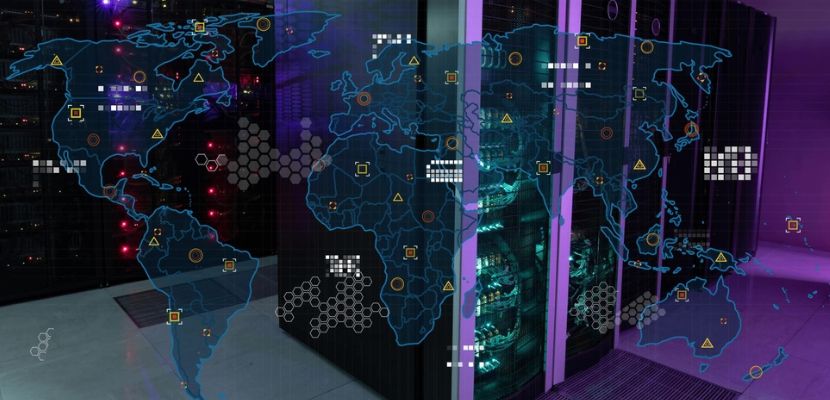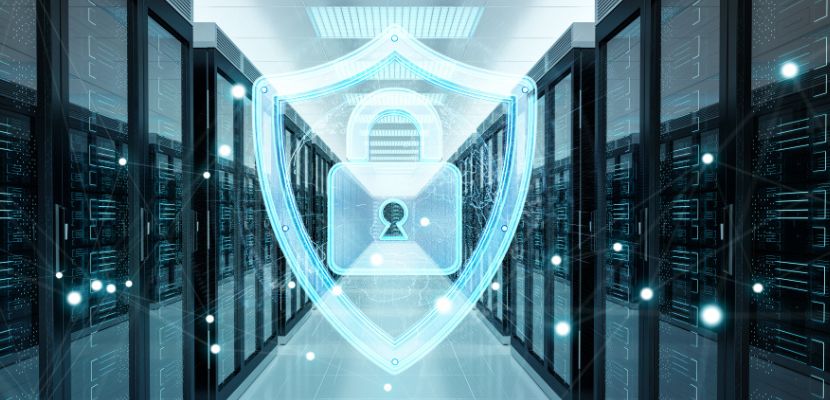A blade server is a compact, modular server designed to minimize space and energy use. Housed in a chassis, it shares power, cooling, and networking resources with other blades, making it ideal for data centers and high-density computing environments.

What Is a Blade Server?
A blade server is a high-density server housed in a compact chassis that can hold multiple server blades, each being a thin, modular electronic circuit board containing one or more processors, memory, and network connections. These servers are designed to save space and energy by sharing power, cooling, networking, and other resources among the blades within the chassis.
Blade servers streamline data center operations by simplifying cabling, reducing physical footprint, and enabling centralized management. They are particularly well-suited for environments requiring scalable computing power, such as cloud computing, virtualization, and high-performance computing applications.
How Does a Blade Server Work?
A blade server operates through a series of coordinated steps, ensuring efficient use of space and resources within a data center:
- Chassis setup. The blade chassis, which houses multiple blade servers, is installed in a data center rack. This chassis includes shared resources like power supplies, cooling fans, and network switches.
- Blade installation. Individual blade servers, which are thin, modular circuit boards, are inserted into the chassis slots. Each blade contains its own processors, memory, and storage components.
- Power distribution. The chassis distributes power from its centralized power supplies to each blade, ensuring consistent and reliable electricity flow to all components.
- Cooling management. Centralized cooling fans within the chassis provide airflow to cool the blades, eliminating the need for individual cooling systems for each server.
- Networking and connectivity. The chassis includes integrated network switches that manage data flow between the blades and external networks. Each blade connects to the network through these shared switches, reducing cabling complexity.
- Resource allocation. Centralized management software allocates processing power, memory, and storage across the blades as needed. This software allows administrators to monitor and manage resources, optimize performance, and ensure efficient load balancing.
- Data processing. Once powered and connected, the blades process data, run applications, and perform computing tasks as assigned. The modular nature allows for easy addition or removal of blades without disrupting the overall system.
- Maintenance and scalability. Blade servers facilitate maintenance and upgrades, as individual blades can be replaced or added without affecting the entire system. This modularity supports scalability, allowing data centers to expand computing capacity by simply adding more blades to the chassis.
Blade Server Components
A blade server is composed of several key components that work together to deliver a compact, efficient, and scalable computing solution. Here are the main components and their explanations:
- Blade chassis. This is the enclosure that houses multiple blade servers. It provides shared power, cooling, and networking resources, simplifying the infrastructure and reducing space requirements.
- Blade server. These are individual server units within the chassis. Each blade contains processors, memory, storage, and network connections, functioning as a fully independent server.
- Power supply units (PSUs). The chassis includes PSUs that distribute power to each blade server. These units are designed to provide reliable and redundant power, ensuring continuous operation even if one power supply fails.
- Cooling fans. Centralized cooling systems within the chassis provide airflow to dissipate heat generated by the blade servers. This shared cooling infrastructure is more efficient than individual cooling solutions for each server.
- Network switches. Integrated network switches manage data flow between the blades and external networks. Switches reduce cabling complexity and facilitate high-speed communication within the chassis and to external devices.
- Management module. This component allows administrators to monitor and manage the entire blade server environment. It provides tools for resource allocation, performance monitoring, and system updates, ensuring efficient operation and easy maintenance.
- Interconnect modules. These modules handle the communication between the blade servers and external storage or network resources. They provide the necessary connectivity and bandwidth for data transfer and resource access.
- Storage modules. Blade servers can be equipped with internal or external storage options. Internal storage is typically provided by solid-state drives (SSDs) or hard disk drives (HDDs) within each blade, while external storage can be accessed through network-attached storage (NAS) or storage area networks (SANs).
Blade Server Types

Blade servers are specialized, high-density server solutions that come in various types tailored to different computing needs. Each type offers unique features and capabilities, making them suitable for specific applications and workloads. They include:
- Compute blades. Compute blades are designed primarily for processing power. They house multiple CPUs and large amounts of RAM, making them ideal for running applications, virtual machines, and other compute-intensive tasks. These blades are often used in environments requiring high performance and efficient resource utilization.
- Storage blades. Storage blades focus on providing large storage capacities. They are equipped with numerous hard drives or SSDs, offering substantial disk space for data storage and management. These blades are commonly used for database management, file storage, and data-intensive applications.
- IO blades (input/output blades). IO blades are specialized for managing input and output operations. They include additional network interfaces, ports, and connectivity options to enhance data transfer rates and connectivity. IO blades are ideal for networking applications, firewall management, and improving overall network performance.
- Graphics processing unit (GPU) blades. GPU blades are designed to handle graphic-intensive tasks. They include one or more GPUs, providing enhanced computational power for rendering, machine learning, and scientific computing. These blades are widely used in fields requiring high-performance computing, such as artificial intelligence and video processing.
- Hybrid blades. Hybrid blades combine elements of compute, storage, and IO capabilities in a single unit. They offer a balanced approach, catering to environments where diverse computing and storage needs must be met without deploying multiple specialized blades. These are versatile and can handle a variety of tasks efficiently.
Blade Server Use Cases
Blade servers are versatile and highly efficient, making them suitable for a wide range of applications in various industries. Their compact design, centralized management, and scalability make them ideal for environments where space, power efficiency, and high performance are critical. Here are some key use cases:
- Data centers. Blade servers are commonly used in data centers to maximize computing power while minimizing physical space and energy consumption. Their modular design allows easy scaling by adding more blades to the chassis without significant infrastructure changes.
- Cloud computing. In cloud computing environments, blade servers provide the necessary computational power to support virtualized resources and cloud services. Their ability to efficiently manage and allocate resources ensures optimal performance and cost-effectiveness for cloud service providers.
- Virtualization. Blade servers are ideal for virtualization, where multiple virtual machines run on a single physical server. The centralized management capabilities of blade servers simplify the deployment, monitoring, and maintenance of virtual environments, improving efficiency and resource utilization.
- High-performance computing (HPC). Blade servers are used in HPC applications, such as scientific research, financial modeling, and complex simulations, due to their high processing power and ability to be densely packed. This setup allows for parallel processing and rapid data analysis.
- Enterprise applications. Large enterprises use blade servers to run critical business applications, including databases, ERP systems, and CRM software. The robust performance and reliability of blade servers ensure these applications run smoothly and support business operations effectively.
- Web hosting. Web hosting companies use blade servers to host multiple websites and web applications on a single server infrastructure. This approach allows for efficient resource allocation, easy scaling, and reduced operational costs.
- Edge computing. In edge computing scenarios, blade servers are deployed close to the source of data generation to process data in real time. This setup reduces latency and bandwidth usage, making blade servers suitable for IoT applications, smart cities, and remote locations.
- Disaster recovery. Blade servers are often part of disaster recovery solutions, providing a compact and efficient way to replicate and back up critical data and applications. Their ease of management and rapid deployment capabilities ensure business continuity in the event of a disaster.
Blade Server Advantages and Disadvantages
Blade servers offer a range of benefits and drawbacks that are crucial for organizations to consider when planning their IT infrastructure. Understanding these advantages and disadvantages helps in making informed decisions about implementing blade servers in various computing environments.
Advantages
Blade servers offer numerous advantages that make them a popular choice for modern data centers and high-performance computing environments. These benefits include:
- Space efficiency. Blade servers are compact and can fit multiple server blades within a single chassis, significantly reducing the physical footprint compared to traditional rack servers.
- Energy efficiency. By sharing power supplies and cooling resources, blade servers consume less energy than standalone servers.
- Simplified management. Blade servers often come with integrated management software that allows for centralized control of all blades within the chassis. Streamlined management simplifies monitoring, updating, and troubleshooting.
- Scalability. Blade servers are highly scalable, allowing data centers to expand their computing capabilities easily by adding more blades to the existing chassis.
- Reduced cabling. The shared networking infrastructure within a blade chassis reduces the need for extensive cabling. Fewer cables not only simplify installation and maintenance but also improve airflow and cooling efficiency within the data center.
- High performance. Blade servers are designed to support high-density computing environments, providing robust performance for applications requiring significant processing power.
- Cost savings. Reduced energy consumption, simplified management, and minimized physical space requirements lead to cost savings over time.
- Flexibility and redundancy. Blade servers offer flexibility in configuration, allowing different types of blades to be mixed within the same chassis. This flexibility supports diverse workloads and provides redundancy, enhancing system reliability and uptime.
Disadvantages
Blade servers, while highly efficient and space-saving, come with certain disadvantages that organizations should consider. These include:
- Higher initial costs. The initial investment in blade server infrastructure can be substantial. The cost of the chassis, blade units, and associated components is often higher than that of traditional rack or tower servers.
- Complexity in management. Managing a blade server environment requires specialized knowledge and expertise. The integrated nature of the system, including shared power and cooling, necessitates careful planning and skilled administration.
- Vendor lock-in. Blade server systems are typically proprietary, meaning components from different vendors may not be compatible. This can lead to vendor lock-in, where organizations are dependent on a single vendor for upgrades, replacements, and support.
- Scalability constraints. While blade servers are designed for scalability, the number of blades that can fit into a single chassis is limited. This physical limitation poses challenges for organizations experiencing rapid growth or requiring extensive computational power.
- Heat and power density. The high density of blade servers can lead to significant heat generation and power consumption. Advanced cooling solutions and careful planning of power distribution are critical.
- Limited customization. The modular design of blade servers can restrict customization options. Organizations may find it challenging to tailor the hardware to specific needs or upgrade individual components independently.
- Maintenance challenges. While blades are designed for easy insertion and removal, servicing the central components of the chassis, such as power supplies or cooling systems, can be complex and may require downtime.
Blade Server vs. Rack Server
Blade servers, known for their high-density design, share power, cooling, and networking within a single chassis, leading to significant space savings and streamlined management, but they come with higher initial costs and potential vendor lock-in.
Rack servers, on the other hand, provide greater flexibility and customization, allowing individual servers to be configured and upgraded independently, making them a versatile choice for diverse and growing IT environments. However, they require more physical space and can be more complex to manage due to increased cabling and separate power and cooling systems.
The choice between blade and rack servers depends on factors like scalability, budget, and specific operational requirements.